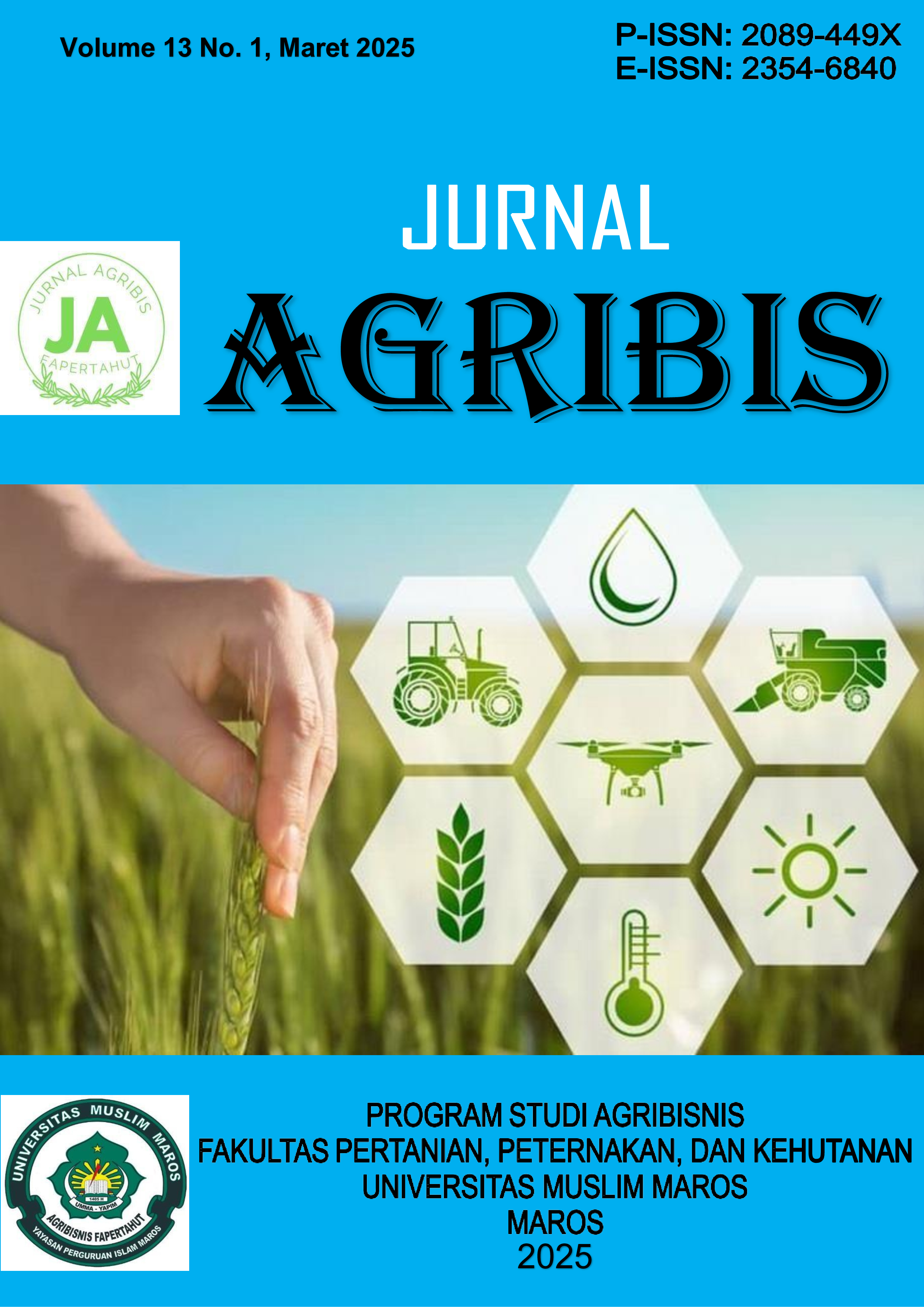Analisis Kelayakan Usaha Budidaya Ikan Nila Menggunakan Teknologi Bioflok (Studi Kasus B12 Fish Farm Kabupaten Sidenreng Rappang)
Keywords:
business feasibility, tilapia, bioflocAbstract
The formation of biofloc occurs through the agitation of organic matter by aeration, which dissolves it in the water column to stimulate the development of aerobic heterotrophic bacteria (sufficient oxygen conditions). These bacteria attach to organic particles, decompose the organic matter (utilizing organic carbon), and absorb minerals such as ammonia, phosphate, and other nutrients in the water. Consequently, beneficial bacteria proliferate well. These bacteria form a consortium, leading to the formation of flocs. The outcome is improved water quality, with organic matter being recycled into flocs that can be consumed by the fish. The research results show that the Feasibility Analysis of Nile Tilapia (Oreochromis Niloticus) Farming Using Biofloc Technology (Case Study at B12 Fish Farm, Sidenreng Rappang Regency) concludes that the production costs for Nile tilapia farming using the biofloc system over seven months and six days can yield better investment returns with significant profits, approximately 166% increase in profitability. This can be achieved by using the biofloc system in tilapia farming in tarpaulin ponds. The profit obtained in this study is IDR 65,994,296, which represents a profit from producing the next batch of goods amounting to IDR 73,564,000. Therefore, from the overall sales results, a profit of 98.45% can be obtained from selling 540 kg of tilapia fingerlings using the biofloc system. Hence, the biofloc system is more advantageous for Nile tilapia farming entrepreneurs, enhancing trust and profitability, thereby increasing production materials that influence the sale of tilapia fingerlings at B12 Fish Farm, Sidenreng Rappang Regency.
References
Effendi, M.I. 2016. Biologi Perikanan. Yogyakarta : Yayasan Pustaka Nusatama.
Suratiyah, K. 2015. Ilmu Usahatani Edisi Revisi. Jakarta: Penebar Swadaya.
Sugiyono. 2018. Metode Penelitian Kuantitatif dan Kualitatif. CV. Alfabeta. Bandung.
Suprapto dan Legian. 2013. Pemanfaatan Bioflok Dari Limbah Budidaya Lele Dumbo (Clarias Gariepinus) sebagai Pakan Nila
(Oreochromis nilotious), eJurnal Rekayasa dan Teknologi Budidaya Perairan, Vol. 2. (2): (267² 272).
Widyastuti. 2018. Analisis Usaha Budidaya Ikan Nila pada CV. Tigas Mas di Desa Talawaan Kecataman Talawaan Kabupaten Minahasa
Utara. Fakultas Perikanan dan Ilmu Kelautan Universitas Sam Ratulangi, Manado. Skripsi.
Mulyani dkk., 2014. Pertumbuhan an Efisiensi Pakan Ikan Nila (Oreochromis niloticus) yang Dipuasakan Secara Priodik, Skripsi S1(Tidak
Dipuplikasikan). Fakultas Pertanian Universitas Sriwijaya, Indralaya.
Arifin, L. (2023). Pengaruh Budidaya Ikan Air Tawar Terhadap Peningkatan Pendapatan Masyarakat di Desa Sipatuo Kecamatan
Patampanua Pinrang (Doctoral dissertation, Iain Parepare)

Downloads
Published
Issue
Section
License
Copyright (c) 2025 Muhammad Nur Syuaib, Nurhapsah Nurhapsah, Nurhaeda Nurhaeda

This work is licensed under a Creative Commons Attribution-ShareAlike 4.0 International License.










